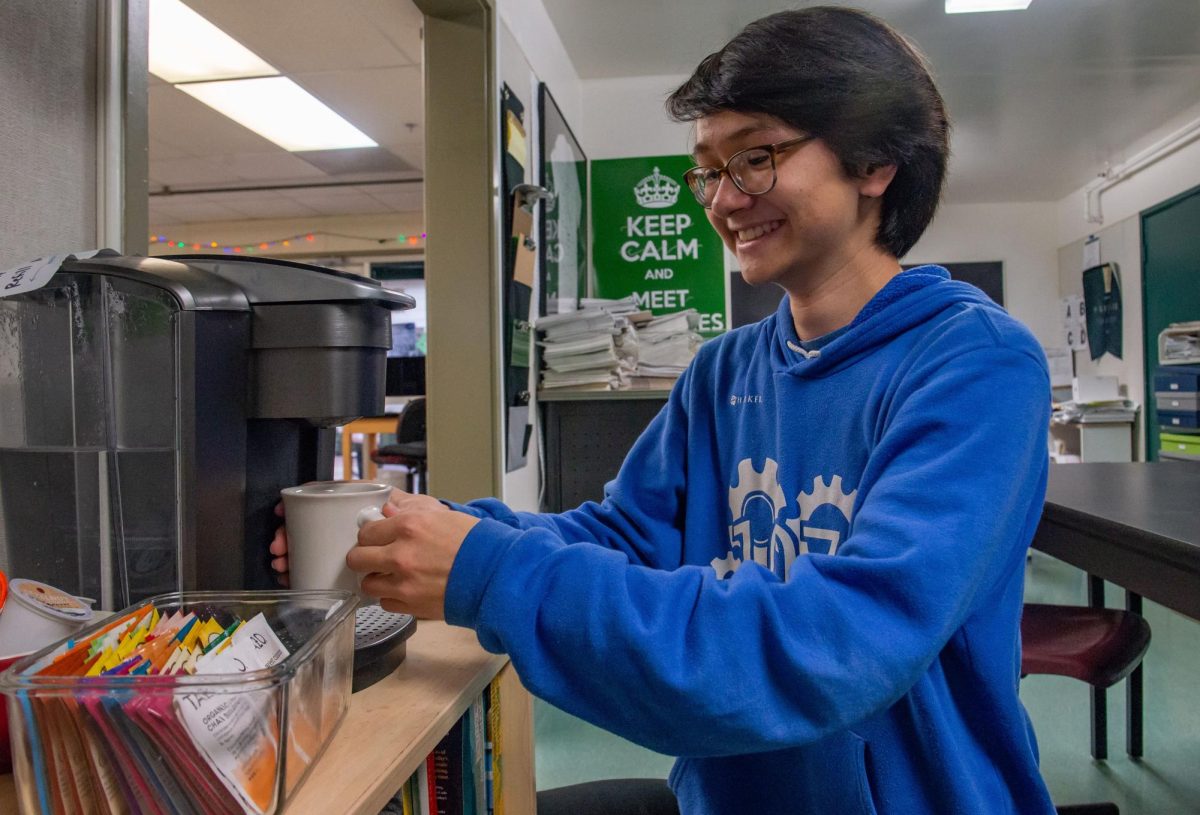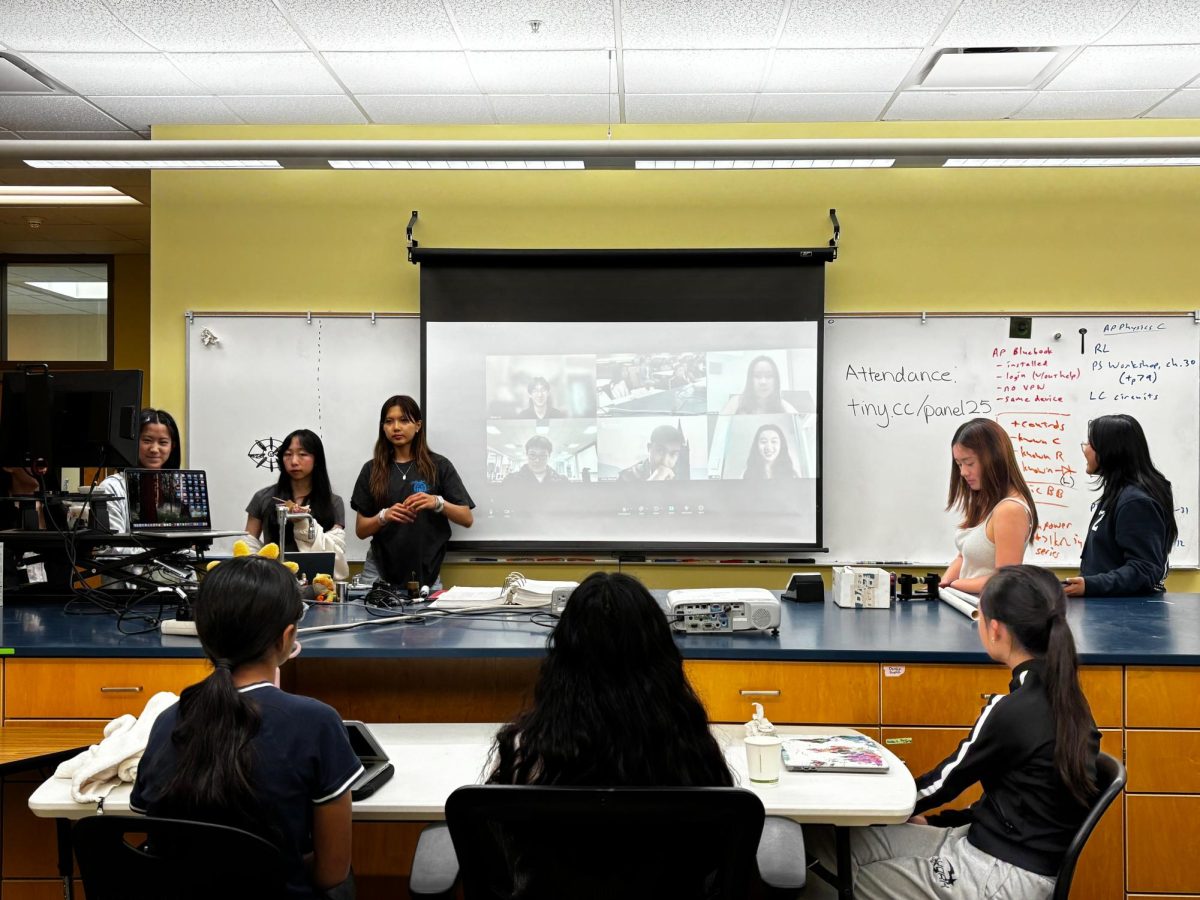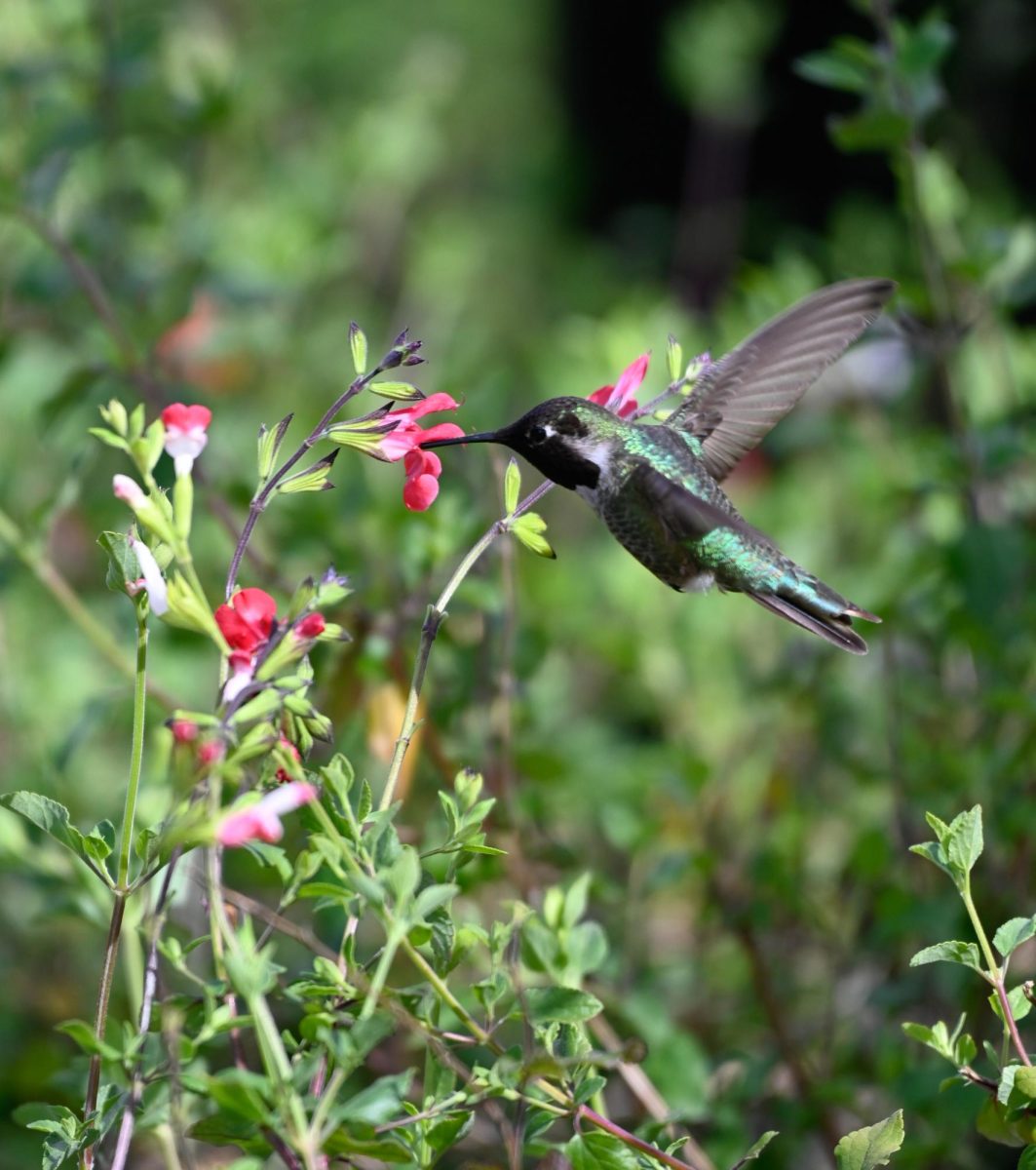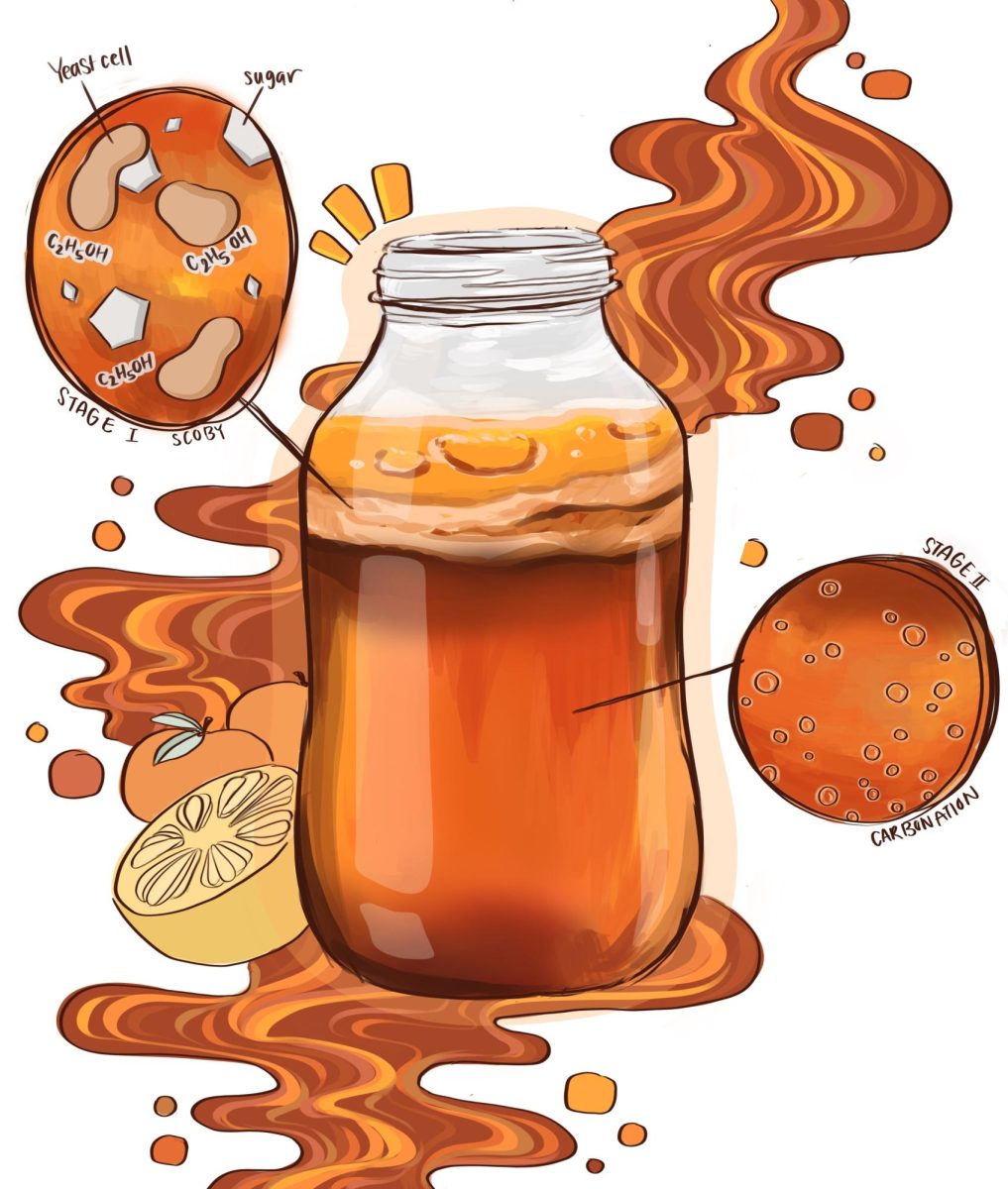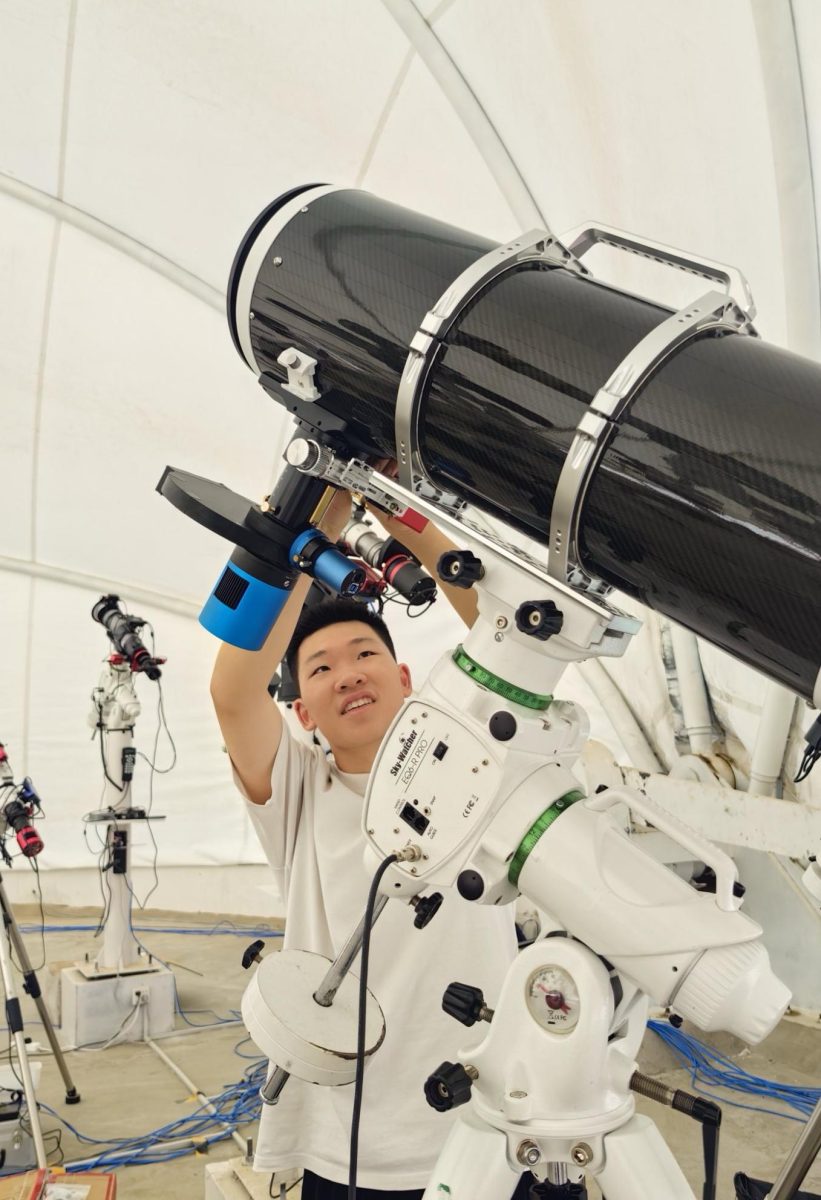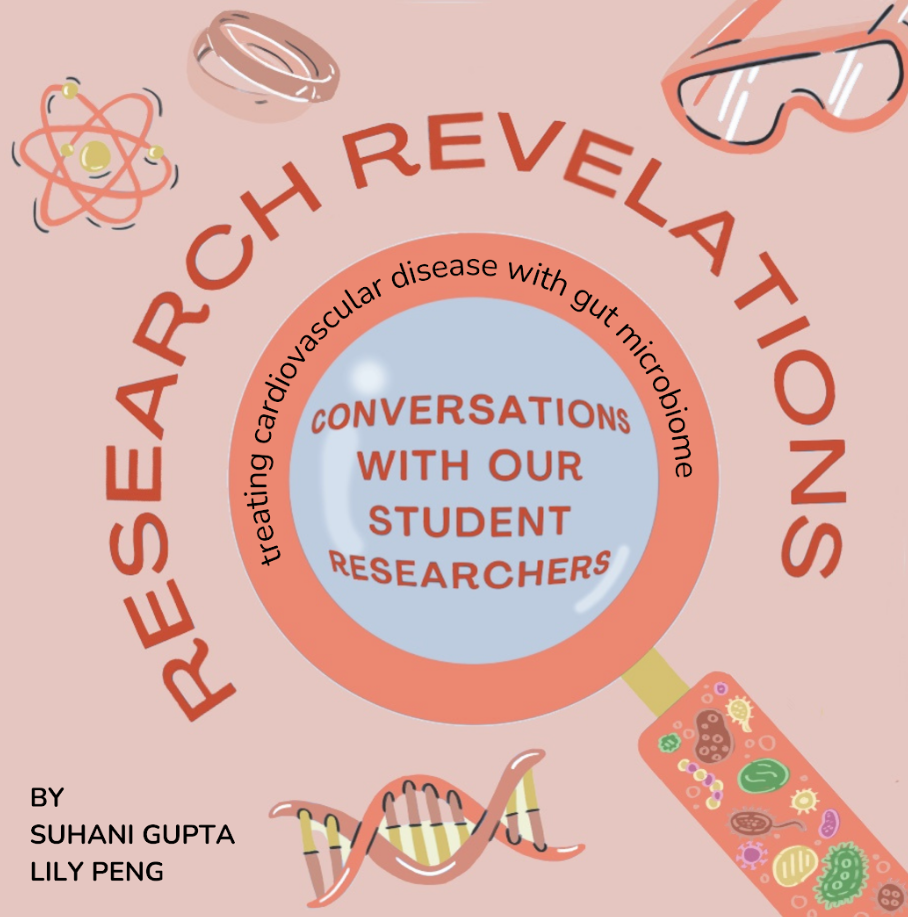Raindrops roll down the pane of windows, pitter-pattering along the streets and sidewalks. Heavy winds rush through the darkened skies, howling at every turn. Trees lie barren. Animals scurry away to shelter. Yet, amidst the gloomy landscape, a glimmer of happiness manifests itself — in the form of a cup of hot chocolate.
For many, warm beverages serve as the go-to drink during chilly times, and with extreme climates in recent times, they have become more and more popular among those seeking salvation from the cold. A common myth suggests that hot drinks can raise the body’s temperature and thus make an individual experience warmth. While this technically holds true, the temperature increase isn’t as large as it seems.
The human body contains 42 liters of water, so an addition of 1 to 2 pints of a hot liquid won’t raise the overall temperature by much. According to a 2018 study, after drinking a hot beverage, subjects experienced an average temperature change of 0.04 degrees Celsius or 0.07 degrees Fahrenheit, around 0.07% of the average body temperature of 98.6 degrees Fahrenheit.
“The temporary rise in temperature in the GI tract would last about 10-15 minutes and your body would regulate and return it to the internal core temperature at around 37 C,” upper school biology teacher Anita Chetty said. “Our enzymes have evolved to function optimally at this temperature. We all know what it feels like when this temperature is raised during a fever. Proteins begin to denature and there can be irreparable tissue damage.”
However, a common tactile image that comes to mind with hot drinks is one of grateful hands clasped around a toasty cup in frigid temperatures, an act that can temporarily provide concentrated yet minimal relief from the cold. These kinds of associations not only impact cultural conceptions on services of such beverages, but also traditions of warm drink’s popularity in the winter season.
“We sort of associate warm drinks with cold months — You hold a warm drink in your hand when it’s cold out so that’s become the association, and all of a sudden, that’s the norm,” upper school psychology teacher Julie Turchin said. “Associations over time become baked into the marketing and people come to expect certain drinks at certain times of the year.”
Furthermore, human nature’s tendency to draw connections between the present and past also shapes how people feel toward hot beverages. Turchin suggests how this psychological facet can play a role in boosting a consumer’s drinking experience by eliciting them to subconsciously relate the act to positive, personal thoughts.
“People develop associations with things, so if you always had hot chocolate on a winter’s day, then drinking hot chocolate as a teenager or adult might evoke fond memories of going skiing with your family or something like that,” Turchin said. “[Warm drinks] become the retrieval cue for the memory.”
Besides feeling, temperature can also impact the taste of the beverage itself. Higher temperatures often intensify flavors of sweetness and bitterness due to stronger stimulation of those respective taste cells on the tongue, while flavors of sourness and saltiness typically remain the same throughout all temperature ranges. Coffees, teas, and hot chocolate-based drinks are especially known for their bitter and sweet sensations, which offers a clue as to why they are commonly drunk hot.
Although ideal temperatures vary from beverage to beverage, scientists recommend a range of 130°F and 160°F balancing preference and safety. Nonetheless, it’s always good to take a sip to test the temperature before drinking hot liquids, as temperatures as low as 140°F can inflict serious burns within seconds. Chetty comments on ideal temperatures to drink water to maximize comfort.
“Drinking warm or lukewarm water, at 37 C, rather than hot water, close to 100 C, would achieve a better sustained response. It hydrates you at your own internal core temperature, gives you some feelings of warmth and therefore peacefulness and not be so hard on your teeth as ice water would be,” she said.
Although science can explain certain sensations felt while drinking hot beverages, temperature and taste preferences can vary between person to person. Ethan Guan (11), who frequently orders hot coffee from Starbucks, shares a personal tip.
“Go for the most bitter drink you can stomach,” Ethan said. “You will find that the more bitter the drink is, the more power it bestows you in battling any stress or pressure you might be going through at that moment.”


















![“[Building nerf blasters] became this outlet of creativity for me that hasn't been matched by anything else. The process [of] making a build complete to your desire is such a painstakingly difficult process, but I've had to learn from [the skills needed from] soldering to proper painting. There's so many different options for everything, if you think about it, it exists. The best part is [that] if it doesn't exist, you can build it yourself," Ishaan Parate said.](https://harkeraquila.com/wp-content/uploads/2022/08/DSC_8149-900x604.jpg)




![“When I came into high school, I was ready to be a follower. But DECA was a game changer for me. It helped me overcome my fear of public speaking, and it's played such a major role in who I've become today. To be able to successfully lead a chapter of 150 students, an officer team and be one of the upperclassmen I once really admired is something I'm [really] proud of,” Anvitha Tummala ('21) said.](https://harkeraquila.com/wp-content/uploads/2021/07/Screen-Shot-2021-07-25-at-9.50.05-AM-900x594.png)







![“I think getting up in the morning and having a sense of purpose [is exciting]. I think without a certain amount of drive, life is kind of obsolete and mundane, and I think having that every single day is what makes each day unique and kind of makes life exciting,” Neymika Jain (12) said.](https://harkeraquila.com/wp-content/uploads/2017/06/Screen-Shot-2017-06-03-at-4.54.16-PM.png)








![“My slogan is ‘slow feet, don’t eat, and I’m hungry.’ You need to run fast to get where you are–you aren't going to get those championships if you aren't fast,” Angel Cervantes (12) said. “I want to do well in school on my tests and in track and win championships for my team. I live by that, [and] I can do that anywhere: in the classroom or on the field.”](https://harkeraquila.com/wp-content/uploads/2018/06/DSC5146-900x601.jpg)
![“[Volleyball has] taught me how to fall correctly, and another thing it taught is that you don’t have to be the best at something to be good at it. If you just hit the ball in a smart way, then it still scores points and you’re good at it. You could be a background player and still make a much bigger impact on the team than you would think,” Anya Gert (’20) said.](https://harkeraquila.com/wp-content/uploads/2020/06/AnnaGert_JinTuan_HoHPhotoEdited-600x900.jpeg)

![“I'm not nearly there yet, but [my confidence has] definitely been getting better since I was pretty shy and timid coming into Harker my freshman year. I know that there's a lot of people that are really confident in what they do, and I really admire them. Everyone's so driven and that has really pushed me to kind of try to find my own place in high school and be more confident,” Alyssa Huang (’20) said.](https://harkeraquila.com/wp-content/uploads/2020/06/AlyssaHuang_EmilyChen_HoHPhoto-900x749.jpeg)



